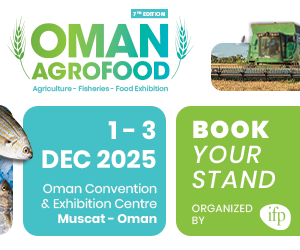Oman is increasingly turning to technology and innovation to modernize its agricultural sector, with a strong focus on enhancing food security through sustainable practices. Key to this transformation is the adoption of precision agriculture—a data-driven approach that uses advanced tools such as AI, sensors, and satellite technology to improve crop yields while minimizing resource use.
State-owned enterprises across the Sultanate are implementing these modern techniques to optimize productivity and reduce environmental impact. The strategy, which supports Oman Vision 2040, was outlined by Saud Hamoud Al Habsi, Minister of Agriculture, Fisheries and Water Resources, in a recent interview published in the Oxford Business Group’s 2025 Oman report.
According to Minister Al Habsi, Oman’s agricultural vision for the next decade includes diversifying crop production, expanding livestock, and enhancing aquaculture to reduce import dependency and strengthen national food self-sufficiency. “To increase competitiveness regionally, we’re adopting precision agriculture and sustainable farming methods. These not only boost productivity but also cut costs,” he explained.
He added that modern food safety systems and improvements to food establishments are also part of the plan, helping reduce waste while adding value to Omani products. Export capabilities are being enhanced through certification, strategic marketing, and alignment with international standards.
Precision agriculture, which incorporates GPS-guided machinery, drone-based imaging, real-time soil and crop sensors, and AI-based farm management tools, is central to these efforts. It allows farmers to monitor soil conditions, crop health, and water use with high accuracy—enabling smarter, more efficient farming.
“Technological innovation is a transformative force,” Al Habsi noted. “Smart irrigation systems and digital monitoring help us conserve water and preserve natural resources—key pillars of Oman Vision 2040.”
Under this vision, the country aims to increase food self-sufficiency from 48% to 70% and nearly double cultivated land area. It also targets a 40% rise in water availability while encouraging high-value crop production and expanded use of modern, digitized services.
The Ministry, in collaboration with public agricultural enterprises, is already advancing on several fronts. Innovations like hydroponics, greenhouse farming, and climate-resilient crops are being introduced, while data analytics tools enable farmers to make informed decisions based on real-time weather and market trends. Biotechnology, including tissue culture techniques, is improving yields and crop resilience.
One standout project is the Million Date Trees Plantation, which leverages satellite data, GIS mapping, drones, and AI to optimize palm cultivation. Real-time monitoring allows for precise detection of issues such as pests, resulting in improved production and fruit quality.
Source: Oman Daily Observer











































































